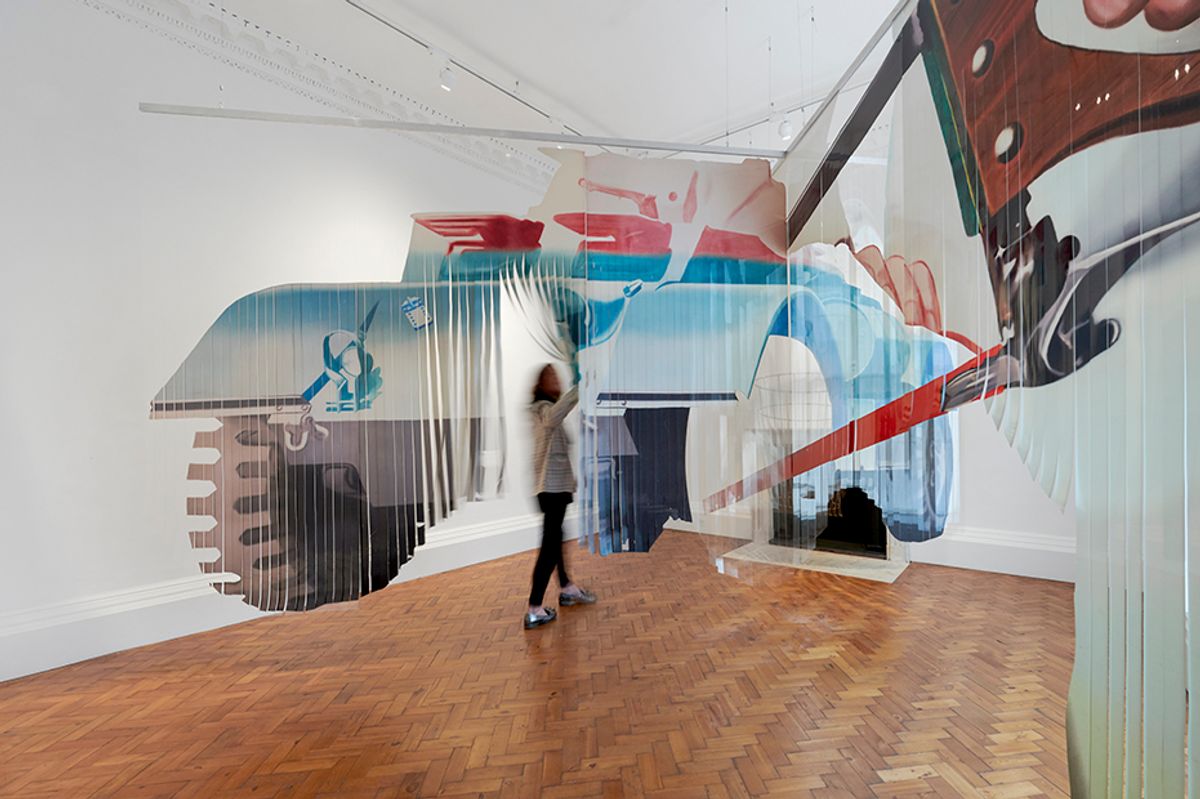Super Rich Interior Decoration at Victoria Miro (until 20 December; free) is Grayson Perry’s first solo commercial show for seven years and—as the title suggests—it is peak “have your cake and eat it as long as you call out your privilege” Perry. “If you put the name of a collector on a piece, they’ll probably buy it,” he says—but what about their face? Very Expensive Abstract Painting (2019) dominates the room—a tapestry (piss-)take on a Gerhard Richter squeegee painting. Further tongue-in-cheek provocation comes from Perry’s signature pots, the first titled Vote Tory (2018) with Jacob Rees-Mogg smiling out smugly from the saccharine glaze. There is also plenty of middle-class merch too—from the £1,800 Vote Tory handbags (twist Alan Measles’s knob for entry) to the self-righteous £95 yoga mats. If Perry doesn’t quite bite the hand that feeds him, he’s certainly made a career out of affectionately chewing on it.
Teak cubes have been stacked in columns with photographs slotted into their interior grooves for Dayanita Singh's new exhibition at Frith Street Gallery (until 9 November; free). Pothi Khana (2018) a Hindi term for an archival room, cleverly explores ways of storing and presenting information. Functioning as "mobile museums" they display piles of cloth sacks marked with Devanagari script, filled with official papers and sealed off, referencing India's love of bureaucracy and paperwork (anyone who has attempted to file a procedural form in the subcontinent will be all too familiar with this infuriating colonial hangover). Using fluid structures that can be endlessly rearranged, Singh presents what is solid and official through mutable and random means, a play of dualities which probes into the malleable nature of history and seemingly "hard facts". Alongside hangs a series of architectural black-and-white photos, cool modular interiors inspired by the South Asian style of Modernism of the late Sri Lankan architect Geoffrey Bawa, whose drawings will be shown in the gallery's lower room from 1 October.
Surprisingly for a 60s-themed show set inside the most genteel of Mayfair townhouses, James Rosenquist: Visualising the Sixties at Thaddaeus Ropac (until 22 November; free) feels remarkably modern. This might be because Rosenquist is relatively unknown in the UK when compared to his Pop Art peers. Accordingly his colour palette—a curious combination of desaturated mauves and bright shocks of yellow and teal—and his glossy advertisement style influenced by early work as a billboard painter— feels somehow fresher. But, as Ropac is keen to prove, the worth of his legacy lies in more than sheer novelty. Rosenquist was a visionary (Warhol frequently described him as his favourite artist) and experimental works such as a kinetic painting which opens and slams shut of its own accord shut takes one by genuine surprise. Making its UK debut is Forest Ranger (1967), an oil-on-mylar painting of a tank which hangs from the ceiling in strips, inviting the viewer to walk through the work. Even today an experiential piece like this feels quite exciting, establishing Rosenquist as a pioneer, as well as somewhat depressingly reminding us how little art has moved forward in the last 60 years.


